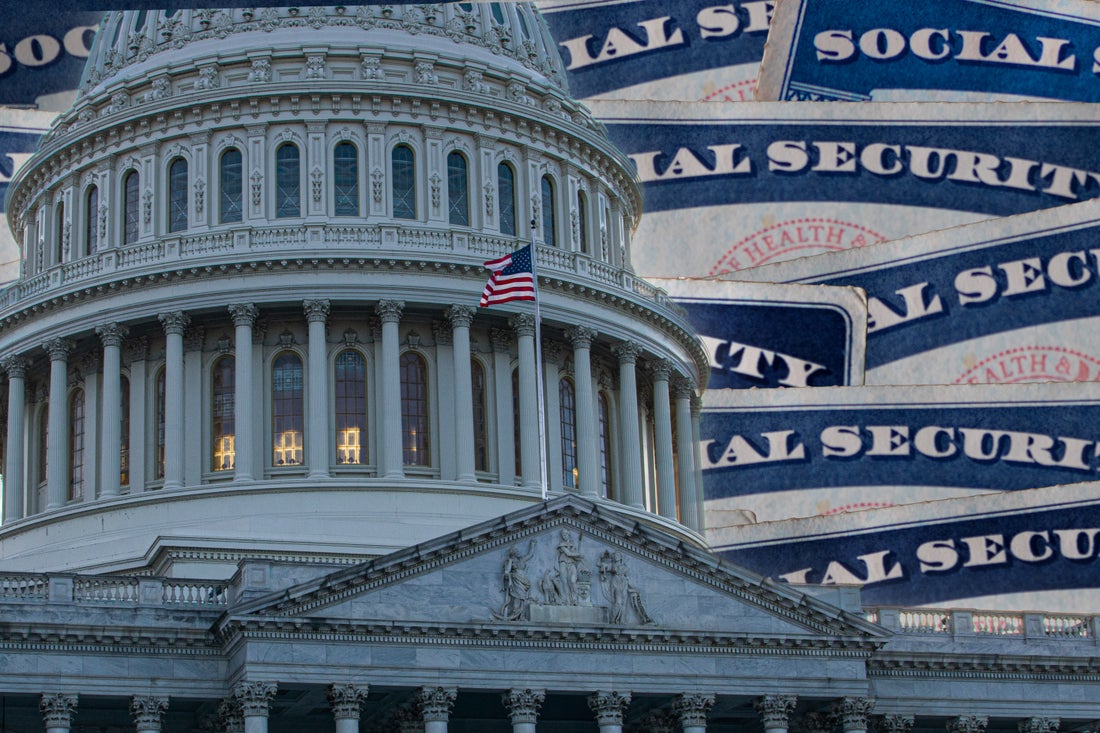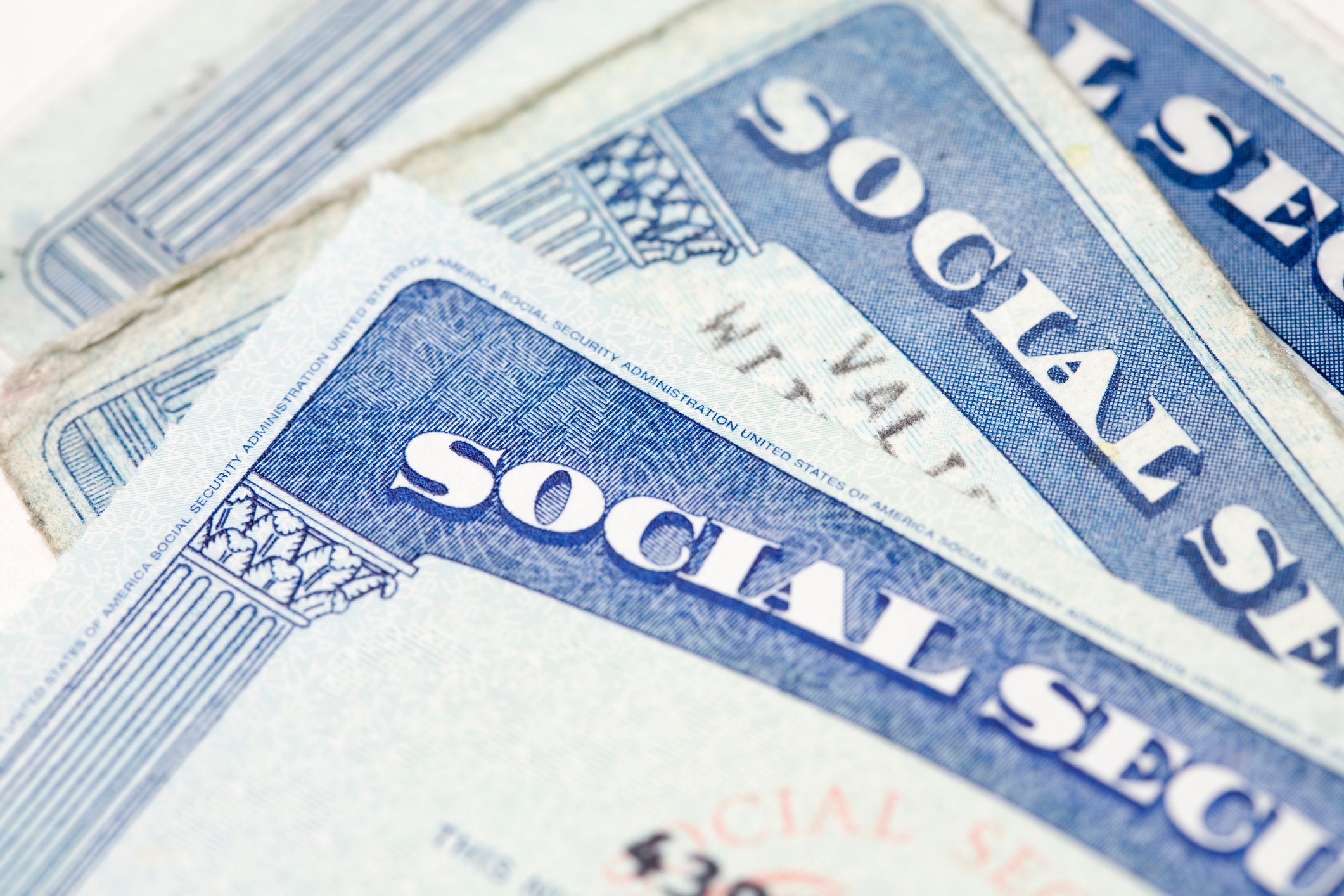Each month, more than 62 million people (not counting those receiving Supplemental Security Income) receive a Social Security benefit check. More than two-thirds of these beneficiaries are retired workers, of which over three out of five will lean on their payouts to account for at least half of their income. In other words, Social Security is an indispensable program that provides a financial foundation for millions of elderly Americans.
Then again, Social Security is also a program facing what could be described as its biggest challenge since inception. Beginning this year and extending for each subsequent year, Social Security is forecast to expend more than it collects in income, per the newest annual Trustees report. With $2.89 trillion in excess cash in its coffers, a net cash outflow might not sound like a big deal. However, after 16 years of paying out more than it's collecting, this $2.89 trillion in asset reserves is projected to be completely exhausted. While this doesn't mean bankruptcy for Social Security, it does mean the real possibility of a substantial cut to benefits.

Image source: Getty Images.
Social Security has numerous "influences" that affect its health
Although this is the most likely scenario, based on the intermediate-cost model provided by the Trustees report, it's not the only scenario. There are, in fact, numerous external factors that could influence Social Security and either increase or decrease its expense outlook, and/or increase or decrease its collected revenue.
For instance, one commonly cited influencer of the program is immigration into the United States. Immigrants tend to be younger when coming to this country, so they're expected to contribute payroll taxes while working for decades to come. Plus, since not all migrants into the U.S. are on a path to legal citizenship, not all will receive a Social Security benefit when they retire. Immigration is a net-positive for the program, meaning the rate at which new migrants are being let into the U.S. can improve or adversely impact the long-term outlook for Social Security.
Fertility rates are another influencer of the program. When forecasting the 75-year outlook for Social Security, the Trustees assume a births-per-woman ratio of 2.0. However, if fertility rates fall below this figure for an extended period of time, as they've done with the millennial generation, then there would be fewer workers in the future to cover a growing base of beneficiaries. As this worker-to-beneficiary ratio rises, it could adversely impact the program.
Then, there's the Federal Reserve. There's probably not an under-the-radar factor that has a more direct and immediate impact on Social Security than our nation's central bank.

Image source: Getty Images.
The Fed's monetary policy can add or subtract tens of billions from Social Security a year
Traditionally, we think of the Federal Reserve as the entity that monitors the nation's money supply and oversees the largest banks. It's also responsible for setting the federal funds target rate, which is the overnight lending rate between banks. It's this federal funds target rate that has the power to influence Social Security.
You see, the federal funds target rate is closely tied to interest rates, such as those you would pay on your credit card, or the yields you'd receive when purchasing a Treasury bond from the U.S. government. If the Federal Reserve is loosening monetary policy and trying to stimulate the U.S. economy, it would lower its federal funds target rate, thereby stimulating lending by making it cheaper. This would impact bonds by reducing yields. Conversely, if the Fed were to tighten monetary policy, it would increase the fed funds target rate in an effort to curb lending. In this scenario, yields on bonds head higher.
Why does this matter, you ask? By law, the Social Security Administration is required to invest all net cash surpluses -- i.e., excess revenue collected, minus program expenditures -- in special-issue bonds and, to a lesser extent, certificates of indebtedness. In essence, Social Security is loaning out its excess cash to the federal government in exchange for Treasury bonds that pay a set interest rate over a defined period of time. If the Fed is loosening monetary supply, the yields on these special-issue bonds would be expected to decline, thereby resulting in less interest income being collected by Social Security. On the other hand, if the Fed is tightening monetary supply, the yields on these government bonds would rise, resulting in more interest income.

Image source: Getty Images.
Right now, the Fed is in the midst of a monetary tightening cycle. Having targeted a historically low federal funds rate of 0% to 0.25% between December 2008 and December 2015, the target rate now sits at almost 2.25%. That's had a nice upward lift on any recently purchased bonds by the Social Security Administration. With most Wall Street firms calling for another two or three 25-basis-point fed funds target rate hikes in 2019, it would appear that more interest income could be in Social Security's future.
According to data from the Social Security Administration, the $2.89 trillion in excess cash currently in its investment holdings is earning nearly 2.9% per year. In 2017, this translated into $85.1 billion in interest income, or about 8.5% of all revenue collected.
Though the payroll tax is by far the program's workhorse, interest income, and the Federal Reserve's influence over monetary policy, still plays a key role.





